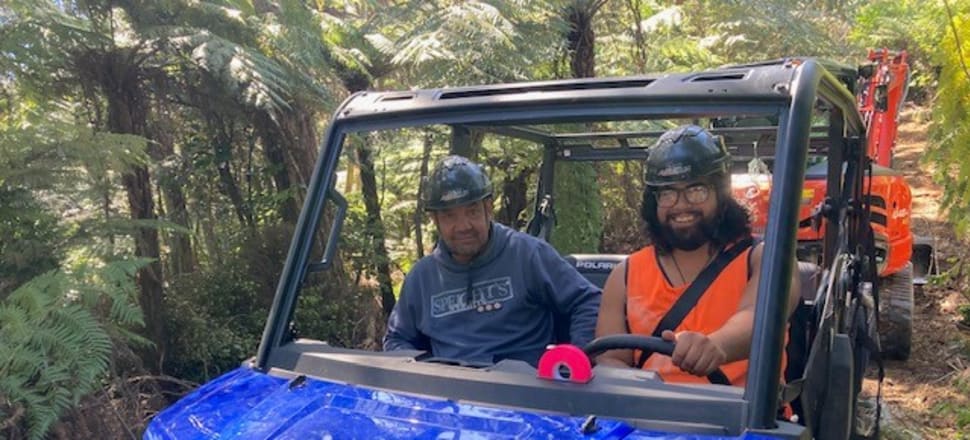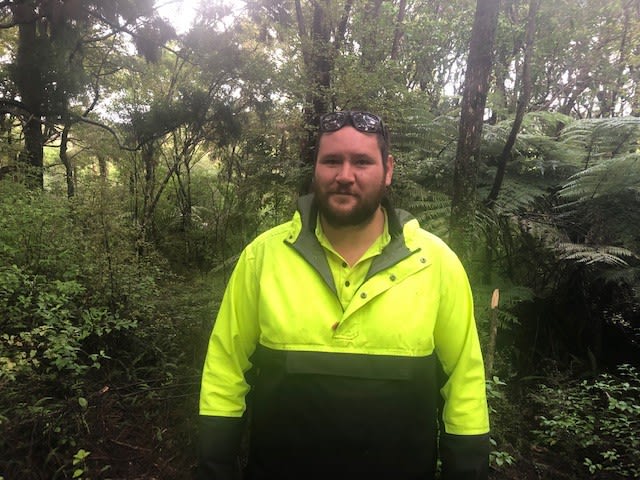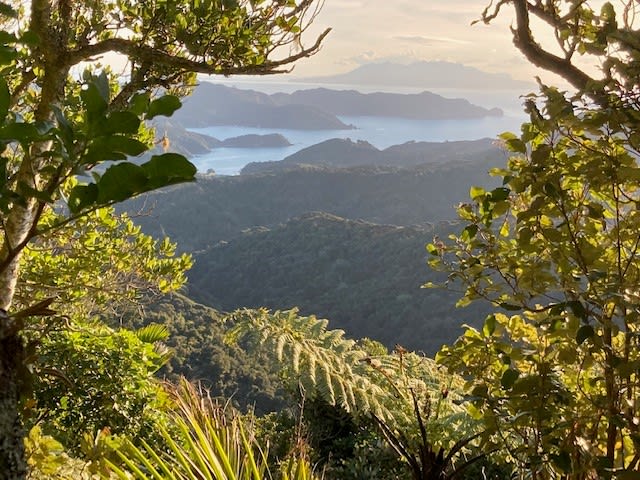
Aotea Great Barrier is renowned for its natural beauty and wildlife, but in the dense bush in some of its remotest parts is a story of generations of neglect. Now, there's an ambitious project to tackle it.
The forest block of Te Paparahi, in the north of Aotea Great Barrier Island, looks untouched from the gravel road that runs past it to one of the island's many deserted white sand beaches.
The nearest shop is about 30 minutes' drive away and the area around here is rarely gets visited - except by locals who live in the nearby community, the farmers on the neighbouring block and a few surfers.
But a short walk into the bush reveals an unwelcome eeriness. There's virtually no birdsong here, because the area is overrun with feral cats and rats. Last year it recorded the lowest number of birds of any of the 18 sites monitored around the island.
"There's not many birds," says Hiku Davis. "Grey warblers, a couple of fantails."
Compared to Okiwi Basin a few kilometres down the road, where a cat and rat control programme is already underway, this forest is silent.
That's about to change, with Te Paparahi the location for the first stage of a multi-million dollar, multi-year project to restore the forests of Aotea, called Tū Mai Taonga.
Davis is taking The Detail for a walk off the main track up to a ridgeline, to explain his job as wāhi tapu advisor on the mana whenua-led programme.
"My role is to track in front of the field team to identify sites of significance, so we can avoid them," he says.
As part of Tū Mai Taonga, the field team is laying 150 kilometres of pest trapping lines in this 4500 hectare forest block. Davis was chosen by kaumātua for his role because of his special gift for recognising tapu sites and artefacts.

Ten minutes' walk into the rain-soaked bush, he points to a piece of flat land that had a house on it, 600 or more years ago.
He says the area was well used by his ancestors, because of its sunny aspect and the abundance of food.
When he comes across a wāhi tapu, he makes sure the trapping lines avoid them.
"These lines are going to be here for years. The old people don't want people walking through these sites and disturbing them."
Davis is also part of the small team of workers doing the work to cut the tracks to lay the trap lines. He says it's an honour to be part of the project.
"For a thousand years as mana whenua we've relied on our environment to survive and now it relies on us for its survival," he says.

The Detail also meets other workers, including Willy West who is familiar with Aotea's bush as a hunter, but is learning about pest eradication.
"It makes you stop this bush," says West. "You can be walking along any tracks like this and then you come around the corner and there can be stands of nikau palms and it's like, holy shit, and then it just changes."
Karllina Wii-Davies is there with her son Leo. A former teacher in Torres Strait, she has returned to the island after 47 years in Australia to be with her father.
She says she feels proud to be working on the project.
It's estimated there are 1000 feral cats and 250,000 ship rats on Aotea, killing tens of thousands of native birds ever year.
But Tū Mai Taonga's operations manager Chris Giblin says no one really knows the true number, because the data hasn't been collected.
At the project's hub in Fitzroy, he shows The Detail a room which is holding the traps, clothing, food and other materials needed, so the workers can stay in Te Paparahi for several days.
Giblin says special cameras are being set up in the area to get a better picture of the cat problem, which the team will tackle first.
"From my experience we have one of the highest densities of [feral cats] in New Zealand," he says.
"Some think in the vicinity of about 1000. I personally thinks its much higher. In feral cat control, we're removing about 350 a year and we're not seeing any change in the population.
"Give it a year and hopefully that silence won't be there anymore."
Hear more about the hard work involved in eradicating pests from Aotea in the full podcast episode.
Find out how to listen to and follow The Detail here.
Stay up-to-date by liking us on Facebook or following us on Twitter.








